Learn how to serve cheese to baby, which varieties are easiest to eat, and which options are considered low-sodium. I give tips for offering cheese for baby-led weaning and as a Stage 3 finger food for babies around 9 months and up.
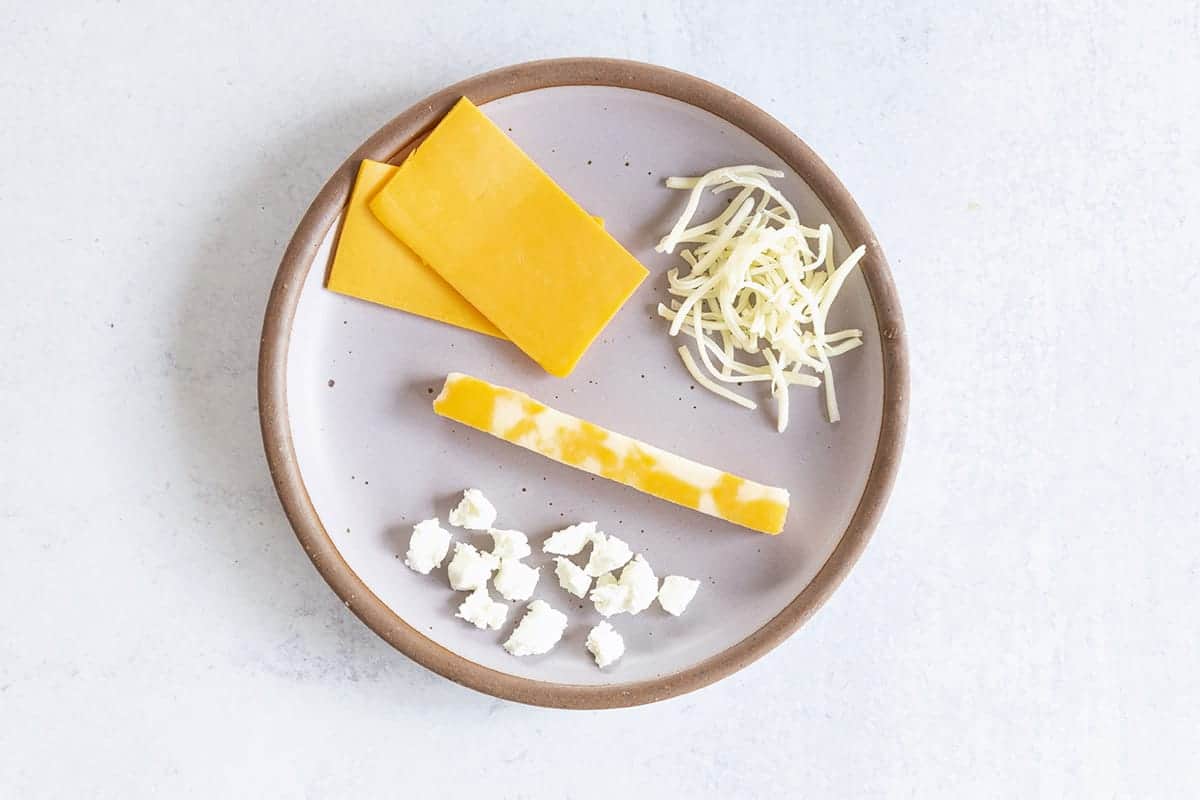
Cheese for Baby
Cheese is an accessible, nutritious food that’s easy to serve to kids from an early age with a few small tweaks to make sure it’s easy to chew and swallow. There is so much variety in the flavor, texture, and consistency of cheeses, which means there are always new options to try.
You can start offering cheese soon after a baby starts solids, or around 6 months, as long as it’s prepared in a way that’s easy for them to ingest.
Generally, you want to start with very soft cheese that is similar in texture to thick baby foods, such as ricotta, blended cottage cheese, or farmer’s cheese. You can spread creamy goat cheese onto toast sticks or offer it on a spoon.
Then, once a baby is ready for baby finger foods, you can do soft goat or feta cheese crumbles and soft shredded cheeses like mozzarella and cheddar. Then you can move on to little pieces of cheese or cheese slices.
The main thing to keep in mind with cheese is that you want to avoid any that are hard or in large chunks, both of which could be a choking hazard.
Table of Contents
- Cheese for Baby
- Which cheese Is good for babies?
- How do I give cheese to babies?
- Do I need to worry about sodium in cheese?
- Cheese for Baby: 6 Months
- Cheese for Baby: 9 Months
- Cheese for Baby-Led Weaning
- Best Cheese for Baby Finger Foods
- Lower-Lactose Cheeses
- Baby-Friendly Recipes with Cheese
- Best Tips for Babies and Cheese
Your toddler won’t eat? Help is here!
Sign up for our email updates to get tips and ideas sent to your inbox.
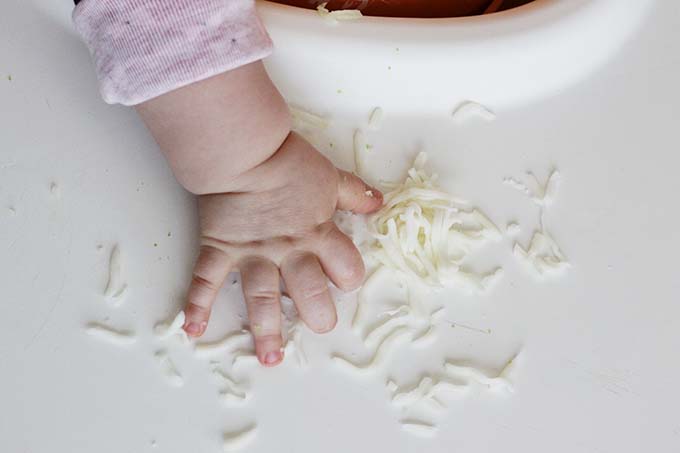
Which cheese Is good for babies?
Soft cheeses including ricotta, farmer’s cheese, goat cheese, cottage cheese, and soft shredded cheeses are great choices for baby starting around 6 months and beyond.
How do I give cheese to babies?
You can offer baby very soft cheeses spread on toast sticks about the same size as your finger, or from a baby spoon. As they get older, you can offer goat cheese crumbles and shredded cheeses. Then progress to small pieces of diced cheese, slices of cheese, and cheese sticks.
Do I need to worry about sodium in cheese?
Salt helps hold moisture in cheese and prevents bacteria growth, so many cheeses are high in sodium—typically around 300-450 mg per serving. That doesn’t mean that we can’t offer cheese to kids, but you may want to consider how much you serve it compared to lower-sodium foods and simply serve it less often.
Some cheeses like goat cheese, whole-milk mozzarella, and Swiss cheese are lower in sodium with about 50-100 mg per serving. Goat cheese and mozzarella are nice, soft options for baby, so they’re great choices.
Learn more about babies and salt.
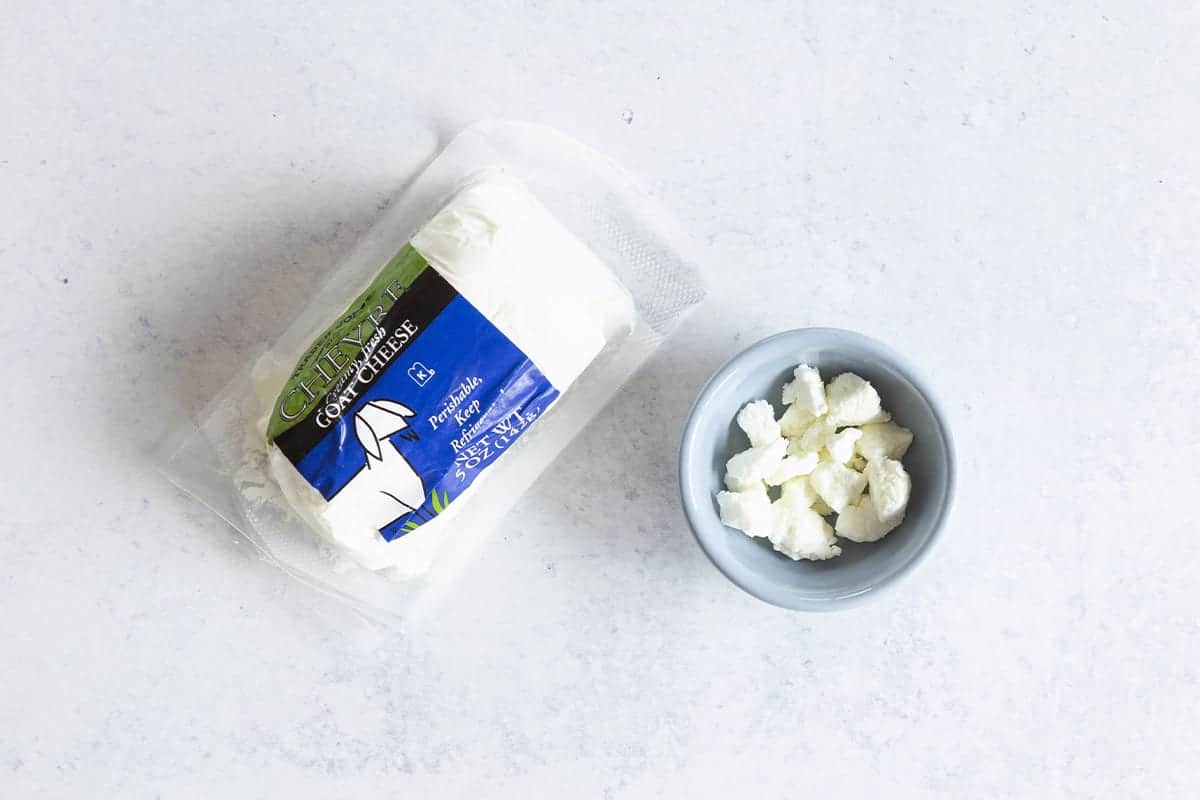
Cheese for Baby: 6 Months
For a baby who’s 6 months old or older, you can offer very soft cheeses like ricotta, cream cheese, farmer’s cheese, or very soft goat cheese from a baby spoon. Or you can spread it on a lightly toasted piece of bread to for baby-led weaning style foods.
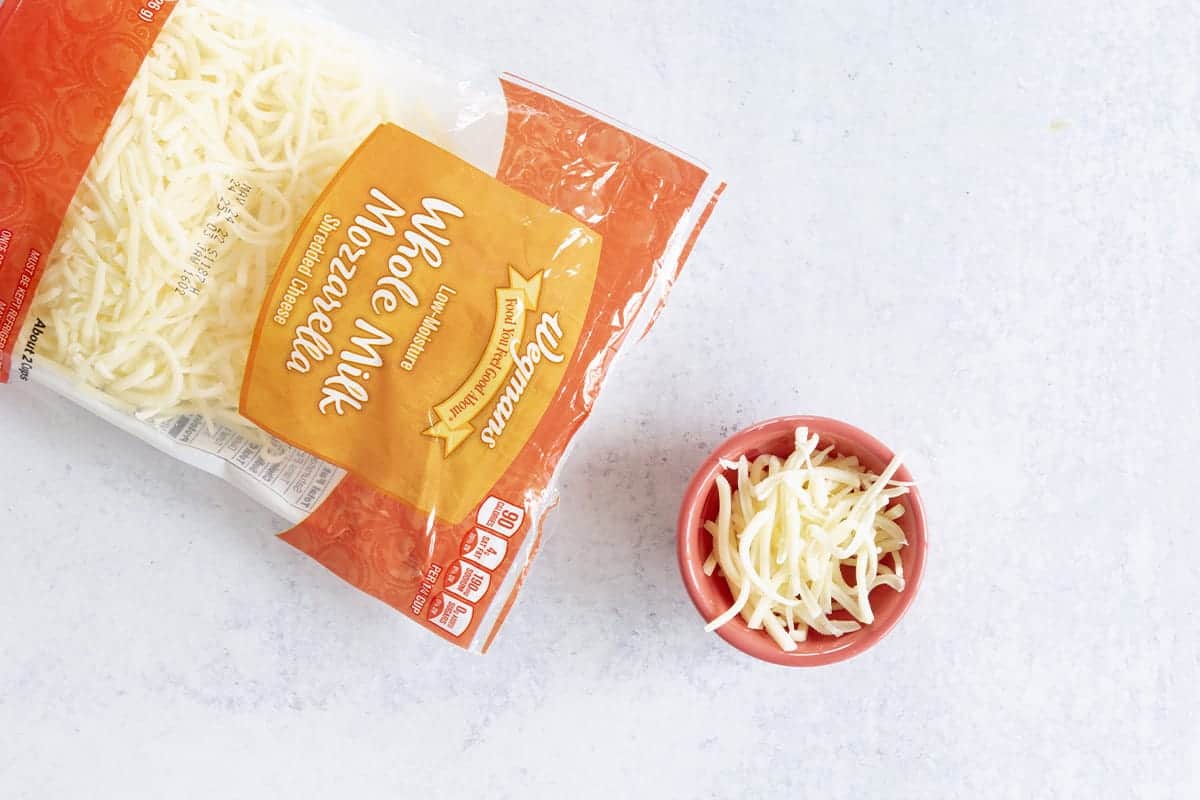
Cheese for Baby: 9 Months
Once a baby is 9 months old, or is able to pick up smaller pieces of food with their fingers, you can offer soft goat cheese crumbles or soft shredded cheeses like mozzarella. These are usually a great early baby finger food option and Stage 3 baby food.
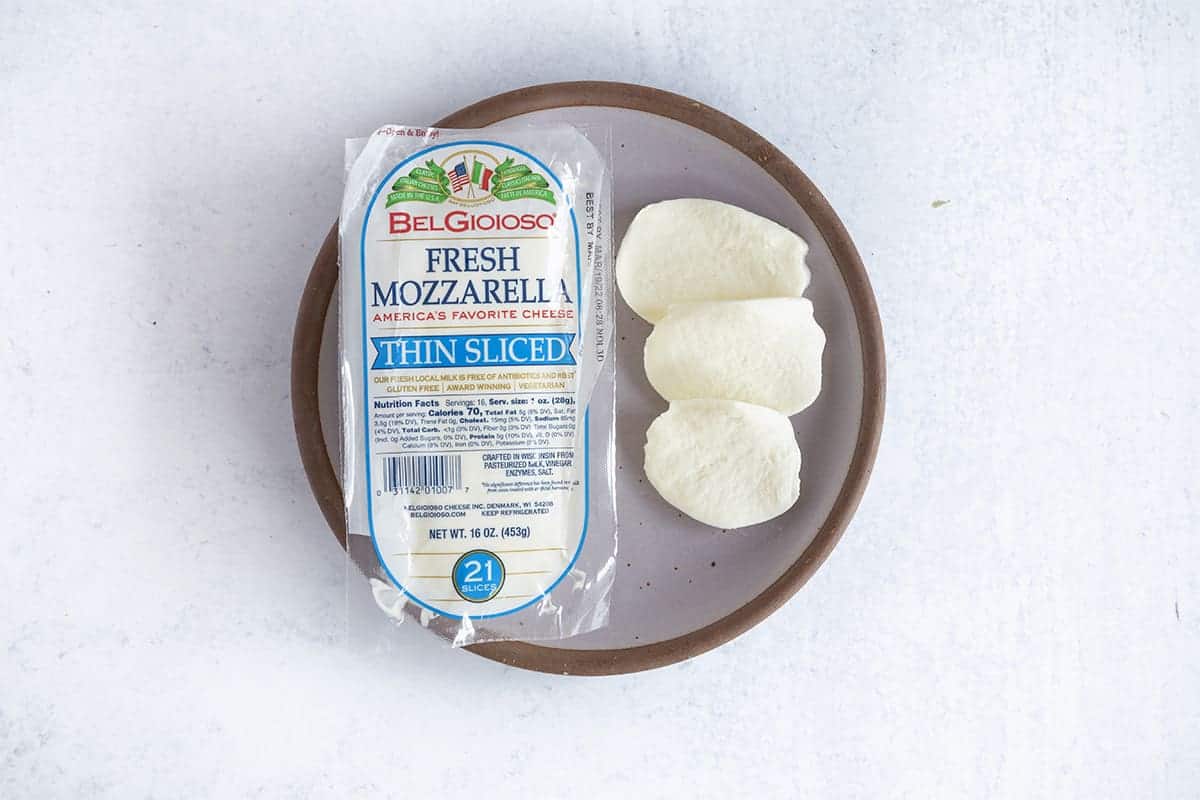
Cheese for Baby-Led Weaning
To offer cheese to a baby being fed with the baby-led weaning feeding method of starting solids, you can spread a very soft cheese onto a finger-size piece of bread. Or mash it onto a spoon and let baby feed themselves.
(Some people do offer baby a larger piece of cheese, like a cheese slice, though I find those pieces to be a little challenging for most babies to manage at an early age. And it can be wasteful if they only eat a little of that big slice.)
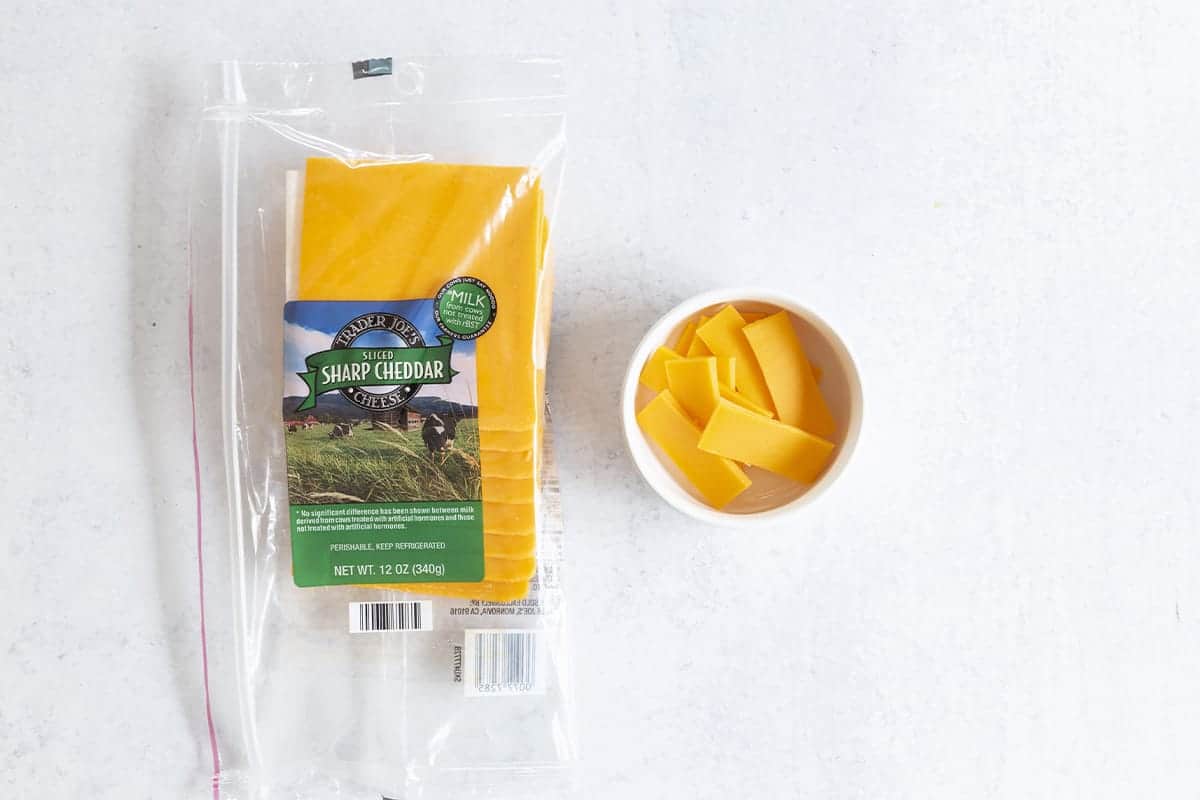
Best Cheese for Baby Finger Foods
Once a baby is around 9 months old, you can offer small pieces of soft cheese crumbles or shredded cheeses.
Over about 12 months old, you can do very small diced cheese. Be sure to cut it small, so it’s roughly the size of two peas or so, to avoid a choking hazard. Avoid using any very firm cheeses, as well.
When a baby is over about 16-18 months old, they may be able to start taking bites from a cheese stick. That may take some practice, so model how to take bites to help them learn how to not take a giant bite and get too much cheese in their mouth at once.
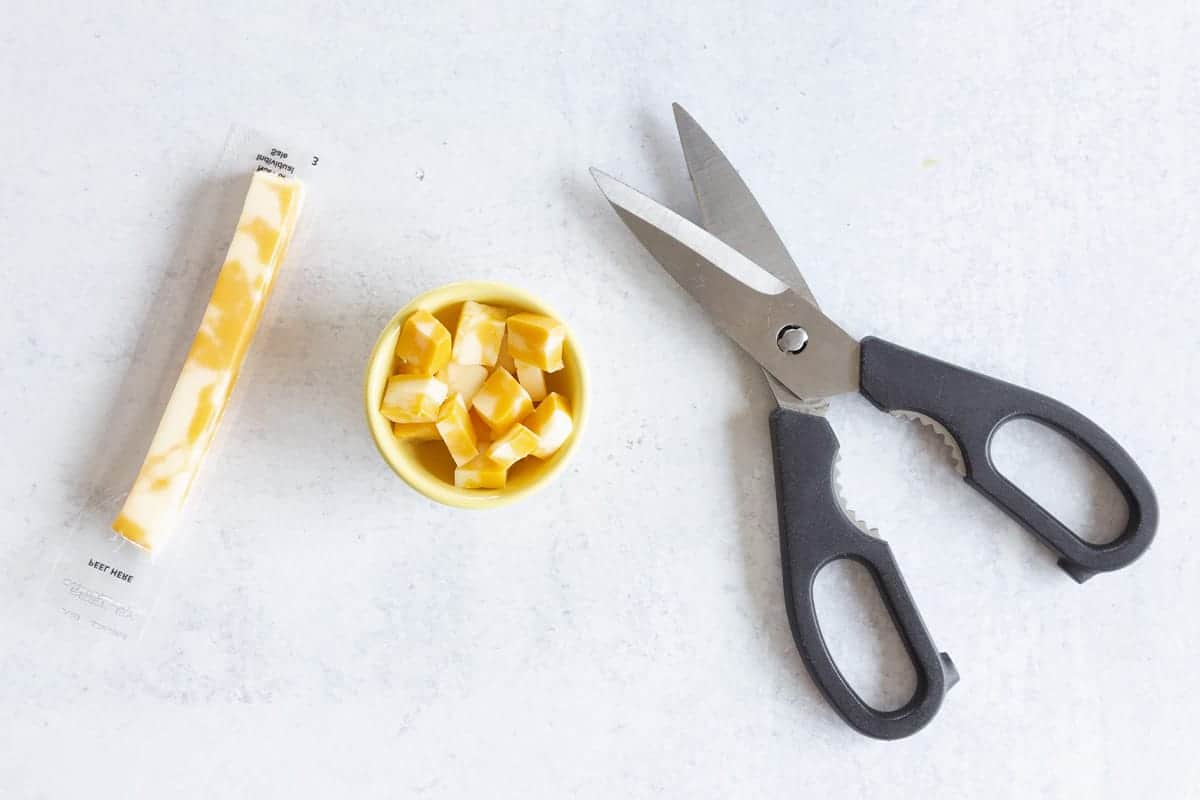
Lower-Lactose Cheeses
According to Harvard, these cheese are lower in lactose and may be easier for some lactose-intolerant people to digest: “Firmer cheeses such as cheddar, mozzarella, and Swiss cheese tend to be lower in lactose.” And they add that creamy cheeses—such as cottage cheese, ricotta, and cream cheese are higher in lactose and may be harder to digest if there’s an issue with lactose.
Baby-Friendly Recipes with Cheese
If you want to try cooking with cheese, these are some favorite recipes to share with babies and toddlers—especially in 1-year-old meals. Click the “get the recipe” button for more info on each idea.
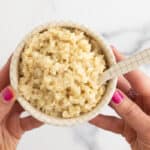
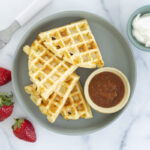





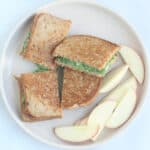

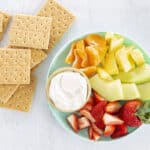


Best Tips for Babies and Cheese
- Start with very soft cheeses to avoid choking hazards.
- Spread ricotta, cream cheese, or cottage cheese onto finger-size toast sticks or offer a pre-loaded spoon to a baby doing baby-led weaning.
- Offer soft cheese crumbles or shredded cheese starting around 9 months as an early finger food.
- Offer very small pieces of soft diced cheeses in the 12- to 14-month range.
- Offer a whole cheese stick or slice, modeling how to take bites, in the 16- to 18-month range.
- Choose lower-sodium cheeses like goat cheese and whole milk mozzarella if you are concerned about sodium intake.
- You may also like Baked Apple Slices, Quinoa Baby Cereal, Apple Puree, Banana Puree, and Carrot Puree.
related recipes
I’d love to hear your feedback on this post, so please comment below to share!






















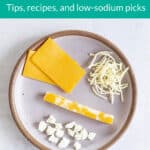
All comments are subject to our Terms of Use.